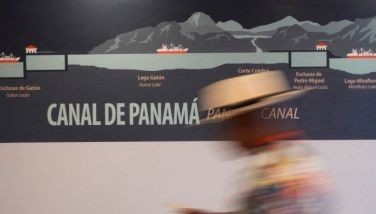Greek archaeology site sparks intense interest
ATHENS, Greece — Archaeologists excavating a large burial mound in northern Greece that has captivated the public's imagination have asked politicians and others seeking guided tours of the site to leave them in peace.
The Culture Ministry appealed Thursday for "understanding" while the Amphipolis excavation proceeds.
The partially uncovered tomb from the end of Greek warrior-king Alexander the Great's reign, which was found inside the mound, has sparked intense media interest amid wild speculation that it may contain rich treasures or the bones of an ancient celebrity.
Alexander inherited the throne of Macedonia, in northern Greece, from where he set off to conquer a vast empire reaching India. He died in 323 B.C. at age 33 and was buried in Egypt — although the precise location of his grave is one of the enduring mysteries of archaeology.
Greek Prime Minister Antonis Samaras has already visited the Amphipolis excavation and state TV daily leads news bulletins with incremental developments about the dig.
So far, archaeologists have uncovered part of the late 4th-century B.C. tomb's entrance, which has two large marble sphinxes placed on a lintel just under the barrel-vaulted roof. Underneath lies the doorway, still covered in earth, with traces of painted plaster decoration.
"It's astonishing, the biggest tomb we have found in Greece so far," said archaeologist Chryssoula Paliadelli, an expert on the period who is not involved in the excavation. "It clearly shows the wealth that allowed construction of what was, at the time, a hugely costly monument."
But the tomb may well have been looted hundreds and hundreds of years ago.
Part of a stone wall that blocked off the subterranean entrance is missing, while the sphinxes — originally two meters (6 feet) high — lack heads and wings. Near the sphinxes, excavators have found fragments of a large marble lion that originally capped the mound, which indicates the site was severely damaged and dug up in later antiquity.
Nobody knows yet who the mound was built for.
Alexander's mother, widow, son, brother and sister-in-law were all murdered in separate attacks in the Amphipolis area during the brutal power struggles that followed his death. However, Macedonian royals were traditionally buried at Aegae, further to the west, where rich, unplundered graves excavated in the late 1970s have been identified as those of Alexander's father, Philip II, and a slain son.
Older research has tentatively linked the lion statue, which was removed during Roman times and discovered a century ago some 5 kilometers (3 miles) away, with Laomedon, one of Alexander's military commanders; his admiral, Nearchos, was a citizen of Amphipolis.
"It's all speculation until we see the inside (of the tomb)" said Michalis Tiverios, a professor of archaeology at the University of Thessaloniki.
The excavation is expected to last at least another few weeks.
- Latest
- Trending





























